Jana Tumova
KTH Royal Institute of Technology, Stockholm, Sweden
BURNS: Backward Underapproximate Reachability for Neural-Feedback-Loop Systems
May 06, 2025Abstract:Learning-enabled planning and control algorithms are increasingly popular, but they often lack rigorous guarantees of performance or safety. We introduce an algorithm for computing underapproximate backward reachable sets of nonlinear discrete time neural feedback loops. We then use the backward reachable sets to check goal-reaching properties. Our algorithm is based on overapproximating the system dynamics function to enable computation of underapproximate backward reachable sets through solutions of mixed-integer linear programs. We rigorously analyze the soundness of our algorithm and demonstrate it on a numerical example. Our work expands the class of properties that can be verified for learning-enabled systems.
Collaborative Object Transportation in Space via Impact Interactions
Apr 25, 2025



Abstract:We present a planning and control approach for collaborative transportation of objects in space by a team of robots. Object and robots in microgravity environments are not subject to friction but are instead free floating. This property is key to how we approach the transportation problem: the passive objects are controlled by impact interactions with the controlled robots. In particular, given a high-level Signal Temporal Logic (STL) specification of the transportation task, we synthesize motion plans for the robots to maximize the specification satisfaction in terms of spatial STL robustness. Given that the physical impact interactions are complex and hard to model precisely, we also present an alternative formulation maximizing the permissible uncertainty in a simplified kinematic impact model. We define the full planning and control stack required to solve the object transportation problem; an offline planner, an online replanner, and a low-level model-predictive control scheme for each of the robots. We show the method in a high-fidelity simulator for a variety of scenarios and present experimental validation of 2-robot, 1-object scenarios on a freeflyer platform.
Risk-Aware Robot Control in Dynamic Environments Using Belief Control Barrier Functions
Apr 05, 2025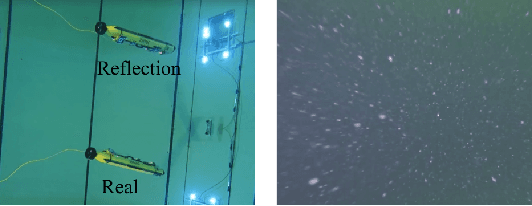
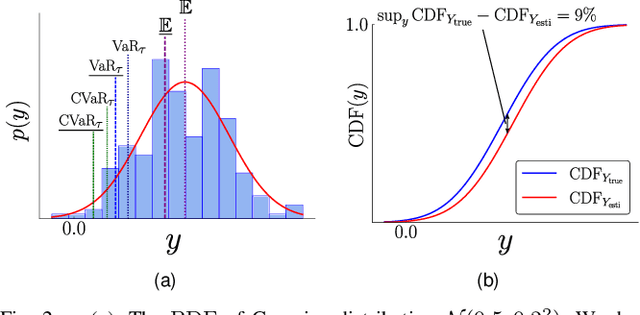
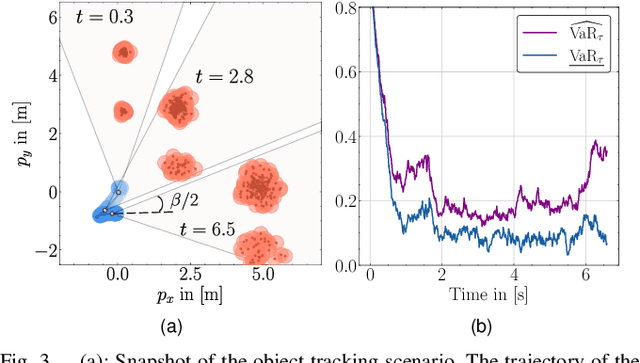
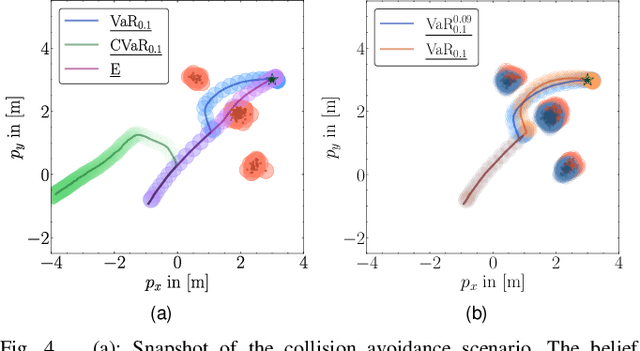
Abstract:Ensuring safety for autonomous robots operating in dynamic environments can be challenging due to factors such as unmodeled dynamics, noisy sensor measurements, and partial observability. To account for these limitations, it is common to maintain a belief distribution over the true state. This belief could be a non-parametric, sample-based representation to capture uncertainty more flexibly. In this paper, we propose a novel form of Belief Control Barrier Functions (BCBFs) specifically designed to ensure safety in dynamic environments under stochastic dynamics and a sample-based belief about the environment state. Our approach incorporates provable concentration bounds on tail risk measures into BCBFs, effectively addressing possible multimodal and skewed belief distributions represented by samples. Moreover, the proposed method demonstrates robustness against distributional shifts up to a predefined bound. We validate the effectiveness and real-time performance (approximately 1kHz) of the proposed method through two simulated underwater robotic applications: object tracking and dynamic collision avoidance.
Pedestrian-Aware Motion Planning for Autonomous Driving in Complex Urban Scenarios
Apr 02, 2025



Abstract:Motion planning in uncertain environments like complex urban areas is a key challenge for autonomous vehicles (AVs). The aim of our research is to investigate how AVs can navigate crowded, unpredictable scenarios with multiple pedestrians while maintaining a safe and efficient vehicle behavior. So far, most research has concentrated on static or deterministic traffic participant behavior. This paper introduces a novel algorithm for motion planning in crowded spaces by combining social force principles for simulating realistic pedestrian behavior with a risk-aware motion planner. We evaluate this new algorithm in a 2D simulation environment to rigorously assess AV-pedestrian interactions, demonstrating that our algorithm enables safe, efficient, and adaptive motion planning, particularly in highly crowded urban environments - a first in achieving this level of performance. This study has not taken into consideration real-time constraints and has been shown only in simulation so far. Further studies are needed to investigate the novel algorithm in a complete software stack for AVs on real cars to investigate the entire perception, planning and control pipeline in crowded scenarios. We release the code developed in this research as an open-source resource for further studies and development. It can be accessed at the following link: https://github.com/TUM-AVS/PedestrianAwareMotionPlanning
Towards Open-Source and Modular Space Systems with ATMOS
Jan 28, 2025



Abstract:In the near future, autonomous space systems will compose a large number of the spacecraft being deployed. Their tasks will involve autonomous rendezvous and proximity operations with large structures, such as inspections or assembly of orbiting space stations and maintenance and human-assistance tasks over shared workspaces. To promote replicable and reliable scientific results for autonomous control of spacecraft, we present the design of a space systems laboratory based on open-source and modular software and hardware. The simulation software provides a software-in-the-loop (SITL) architecture that seamlessly transfers simulated results to the ATMOS platforms, developed for testing of multi-agent autonomy schemes for microgravity. The manuscript presents the KTH space systems laboratory facilities and the ATMOS platform as open-source hardware and software contributions. Preliminary results showcase SITL and real testing.
Efficient Non-Myopic Layered Bayesian Optimization For Large-Scale Bathymetric Informative Path Planning
Oct 21, 2024



Abstract:Informative path planning (IPP) applied to bathymetric mapping allows AUVs to focus on feature-rich areas to quickly reduce uncertainty and increase mapping efficiency. Existing methods based on Bayesian optimization (BO) over Gaussian Process (GP) maps work well on small scenarios but they are short-sighted and computationally heavy when mapping larger areas, hindering deployment in real applications. To overcome this, we present a 2-layered BO IPP method that performs non-myopic, real-time planning in a tree search fashion over large Stochastic Variational GP maps, while respecting the AUV motion constraints and accounting for localization uncertainty. Our framework outperforms the standard industrial lawn-mowing pattern and a myopic baseline in a set of hardware in the loop (HIL) experiments in an embedded platform over real bathymetry.
Co-Designing Tools and Control Policies for Robust Manipulation
Sep 17, 2024Abstract:Inherent robustness in manipulation is prevalent in biological systems and critical for robotic manipulation systems due to real-world uncertainties and disturbances. This robustness relies not only on robust control policies but also on the design characteristics of the end-effectors. This paper introduces a bi-level optimization approach to co-designing tools and control policies to achieve robust manipulation. The approach employs reinforcement learning for lower-level control policy learning and multi-task Bayesian optimization for upper-level design optimization. Diverging from prior approaches, we incorporate caging-based robustness metrics into both levels, ensuring manipulation robustness against disturbances and environmental variations. Our method is evaluated in four non-prehensile manipulation environments, demonstrating improvements in task success rate under disturbances and environment changes. A real-world experiment is also conducted to validate the framework's practical effectiveness.
TTT: A Temporal Refinement Heuristic for Tenuously Tractable Discrete Time Reachability Problems
Jul 19, 2024Abstract:Reachable set computation is an important tool for analyzing control systems. Simulating a control system can show that the system is generally functioning as desired, but a formal tool like reachability analysis can provide a guarantee of correctness. For linear systems, reachability analysis is straightforward and fast, but as more complex components are added to the control system such as nonlinear dynamics or a neural network controller, reachability analysis may slow down or become overly conservative. To address these challenges, much literature has focused on spatial refinement, e.g., tuning the discretization of the input sets and intermediate reachable sets. However, this paper addresses a different dimension: temporal refinement. The basic idea of temporal refinement is to automatically choose when along the horizon of the reachability problem to execute slow symbolic queries which incur less approximation error versus fast concrete queries which incur more approximation error. Temporal refinement can be combined with other refinement approaches and offers an additional ``tuning knob'' with which to trade off tractability and tightness in approximate reachable set computation. Here, we introduce an automatic framework for performing temporal refinement and we demonstrate the effectiveness of this technique on computing approximate reachable sets for nonlinear systems with neural network control policies. We demonstrate the calculation of reachable sets of varying approximation error under varying computational budget and show that our algorithm is able to generate approximate reachable sets with a similar amount of error to the baseline approach in 20-70% less time.
Forward Invariance in Trajectory Spaces for Safety-critical Control
Jul 17, 2024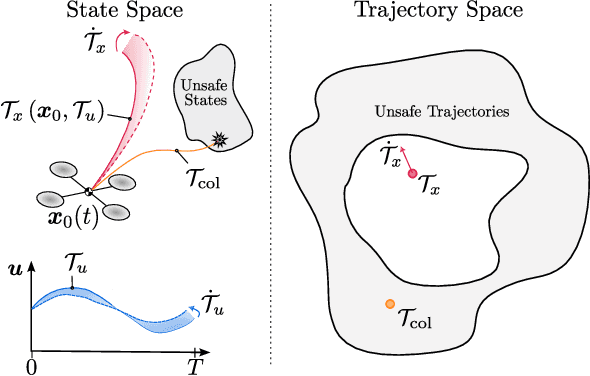
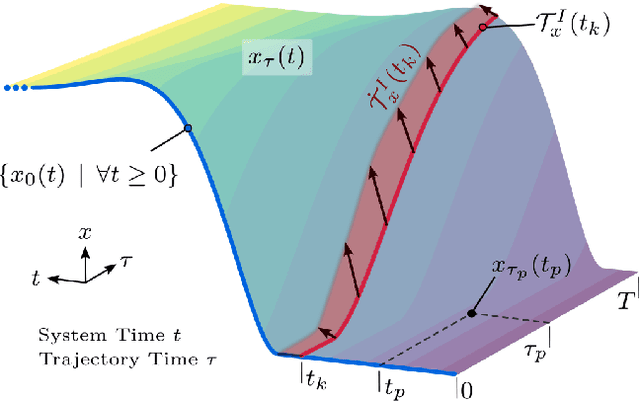
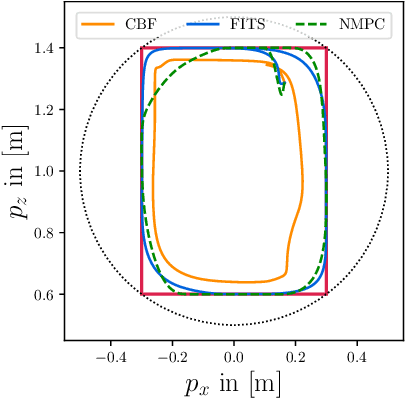
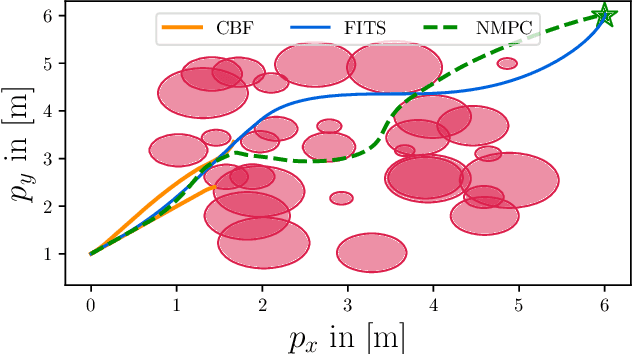
Abstract:Useful robot control algorithms should not only achieve performance objectives but also adhere to hard safety constraints. Control Barrier Functions (CBFs) have been developed to provably ensure system safety through forward invariance. However, they often unnecessarily sacrifice performance for safety since they are purely reactive. Receding horizon control (RHC), on the other hand, consider planned trajectories to account for the future evolution of a system. This work provides a new perspective on safety-critical control by introducing Forward Invariance in Trajectory Spaces (FITS). We lift the problem of safe RHC into the trajectory space and describe the evolution of planned trajectories as a controlled dynamical system. Safety constraints defined over states can be converted into sets in the trajectory space which we render forward invariant via a CBF framework. We derive an efficient quadratic program (QP) to synthesize trajectories that provably satisfy safety constraints. Our experiments support that FITS improves the adherence to safety specifications without sacrificing performance over alternative CBF and NMPC methods.
Robust STL Control Synthesis under Maximal Disturbance Sets
Apr 08, 2024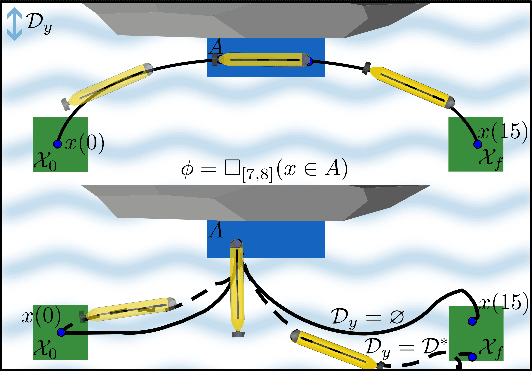
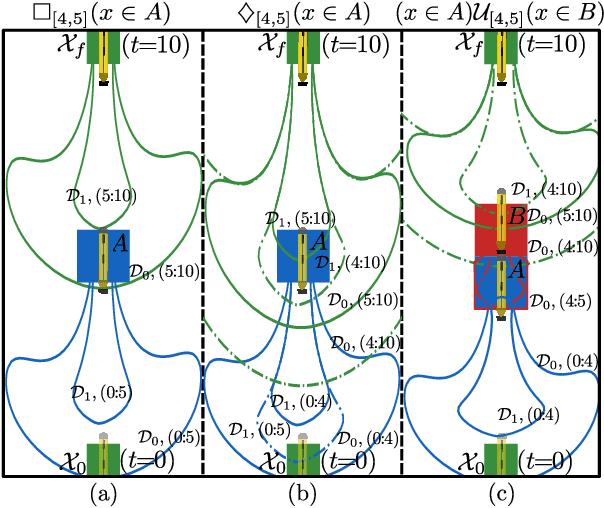
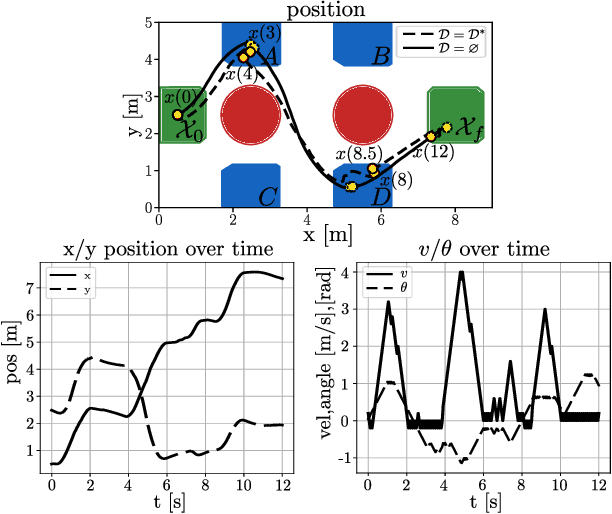
Abstract:This work addresses maximally robust control synthesis under unknown disturbances. We consider a general nonlinear system, subject to a Signal Temporal Logic (STL) specification, and wish to jointly synthesize the maximal possible disturbance bounds and the corresponding controllers that ensure the STL specification is satisfied under these bounds. Many works have considered STL satisfaction under given bounded disturbances. Yet, to the authors' best knowledge, this is the first work that aims to maximize the permissible disturbance set and find the corresponding controllers that ensure satisfying the STL specification with maximum disturbance robustness. We extend the notion of disturbance-robust semantics for STL, which is a property of a specification, dynamical system, and controller, and provide an algorithm to get the maximal disturbance robust controllers satisfying an STL specification using Hamilton-Jacobi reachability. We show its soundness and provide a simulation example with an Autonomous Underwater Vehicle (AUV).
 Add to Chrome
Add to Chrome Add to Firefox
Add to Firefox Add to Edge
Add to Edge